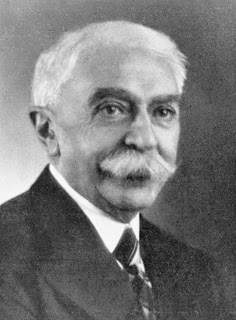It’s Sunday, a slow Sunday. The end of August already hums the diatribes of life in September. Today I will use the Sabbath. Sabbath the day of rest is as a substantial part of creation. I will dedicate myself to resting.
I believe that God tattooed the natural law into our souls because he guessed we would invent religion. I am amused by the list of things that can and cannot be done on the Sabbath according to Jewish law. All churches legislate the lives of mankind according to a single and true book that only they can interpret. That is no excuse for not being good people, but the similar pattern in different cultures and religions is striking.
The day is rainy. A Caribbean hurricane, which has lost its way and is heading to the cold North, is leaving a load of water. I look out the window and I see this somewhat old almond tree, a mediocre old age because it does not have the reverence of immortality granted to those trees with too much experience. Humanity assigns the condition of immortality to everything that survives us. The almond tree is there to make life more beautiful those two weeks of spring when its flowers explode in that persistent miracle of life we call spring. Sometimes I wonder why I am here. What is my mission, what are my two weeks of beauty, am I about to flower? Hope is always a question without an answer, a question to the future, to what is not there yet. Baroja said that the past is nostalgia and the future anxiety. I do not agree with anxiety as a paradigm of the future. It may be in youth, a time that carries a feeling of power, of creating the future and that is the root of the youth’s anxiety. Age shows that life is unpredictable, something like those non-linear mathematical models (the butterfly effect for corny ones) in which the prediction of the result is a range of values, there are no unique outcomes. In addition, the predictions are so as long as the premises or conditions of the system are not changed. Getting older is accepting uncertainty without anxiety, accepting the unpredictability of life, becoming stoic somehow.
And I go back to the rain because in August rain sounds different. It falls on the ground, there is no music on the October leaves lying on the ground waiting for the rain hug. It is a rain with a different score, the drop falls on the ground unambiguously, holding hands with gravity, that is it.
And looking at the tree and the rain, that tree that knows its function and that rain that produces a routine with nuances, I see the constant vogue of life between the peaceful, predictable and the adventure of the unknown and dangerous. Sometimes the routine seems holy to us and the precedent the best reason. However, we are made for adventures and pursuits, life is movement.
Meanwhile, a Sunday of rest and observation of the rain summarized in drops hugging the leaves of the almond tree that recalls its past beauty is appreciated. Baumgarten defined aesthetics as “the art of thinking well” (pulchre cogitandi). Kant thought about the experience of beauty, how we can find something beautiful and if there is universality in beauty. Ah why do we always try to categorize all aspects of our world?
Umbral said that “The universe is always governed by persistence, never by intelligence. There is no other law than persistence. Only boredom moves the clouds in the sky and the waves in the sea “
So I will continue to admire this gentle rain at the end of August, with no other expectation than the next drop.
And that’s all
References
Aesthetica by Alexander Gottlieb Baumgarten 1750
The relevance of the beautiful by Hans-Georg Gadamer 1986
The concerns of Shanti Andia by Pio Baroja 1911
Mortal y Rosa by Francisco Umbral 1975

